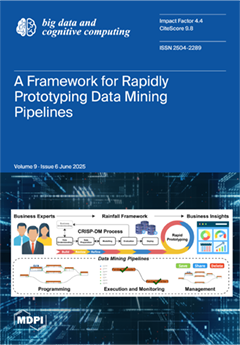Large-language-model (LLM) APIs demonstrate impressive reasoning capabilities, but their size, cost, and closed weights limit the deployment of knowledge-aware AI within biomedical research groups. At the other extreme, standard attention-based neural language models (SANLMs)—including encoder–decoder architectures such as Transformers, Gated Recurrent Units (GRUs),
[...] Read more.
Large-language-model (LLM) APIs demonstrate impressive reasoning capabilities, but their size, cost, and closed weights limit the deployment of knowledge-aware AI within biomedical research groups. At the other extreme, standard attention-based neural language models (SANLMs)—including encoder–decoder architectures such as Transformers, Gated Recurrent Units (GRUs), and Long Short-Term Memory (LSTM) networks—are computationally inexpensive. However, their capacity for semantic reasoning in noisy, open-vocabulary knowledge bases (KBs) remains unquantified. Therefore, we investigate whether compact SANLMs can (i) reason over hybrid OpenIE-derived KBs that integrate commonsense, general-purpose, and non-communicable-disease (NCD) literature; (ii) operate effectively on commodity GPUs; and (iii) exhibit semantic coherence as assessed through manual linguistic inspection. To this end, we constructed four training KBs by integrating ConceptNet (600k triples), a 39k-triple general-purpose OpenIE set, and an 18.6k-triple OpenNCDKB extracted from 1200 PubMed abstracts. Encoder–decoder GRU, LSTM, and Transformer models (1–2 blocks) were trained to predict the object phrase given the subject + predicate. Beyond token-level cross-entropy, we introduced the Meaning-based Selectional-Preference Test (MSPT): for each withheld triple, we masked the object, generated a candidate, and measured its surplus cosine similarity over a random baseline using word embeddings, with significance assessed via a one-sided
t-test. Hyperparameter sensitivity (311 GRU/168 LSTM runs) was analyzed, and qualitative frame–role diagnostics completed the evaluation. Our results showed that all SANLMs learned effectively from the point of view of the cross entropy loss. In addition, our MSPT provided meaningful semantic insights: for the GRUs (256-dim, 2048-unit, 1-layer): mean similarity
of 0.641 to the ground truth vs. 0.542 to the random baseline (gap 12.1%;
). For the 1-block Transformer:
vs.
(gap 4%;
). While Transformers minimized loss and accuracy variance, GRUs captured finer selectional preferences. Both architectures trained within <24 GB GPU VRAM and produced linguistically acceptable, albeit over-generalized, biomedical assertions. Due to their observed performance, LSTM results were designated as baseline models for comparison. Therefore, properly tuned SANLMs can achieve statistically robust semantic reasoning over noisy, domain-specific KBs without reliance on massive LLMs. Their interpretability, minimal hardware footprint, and open weights promote equitable AI research, opening new avenues for automated NCD knowledge synthesis, surveillance, and decision support.
Full article





